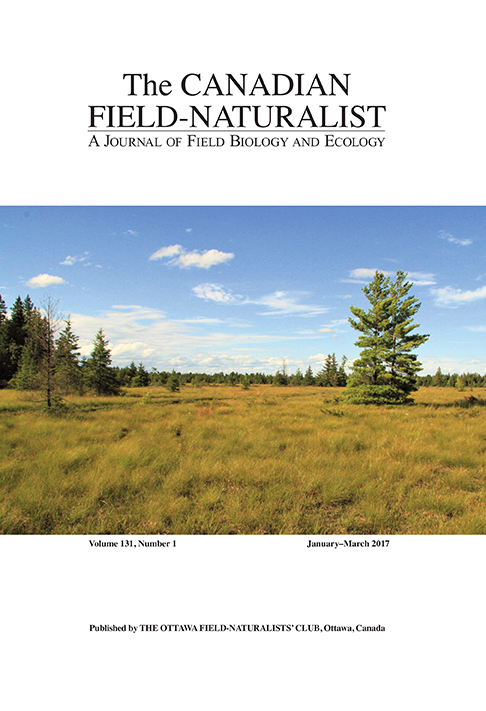Use of Camera Traps Provides Insight into the Feeding Ecology of Red Foxes (Vulpes vulpes)
DOI:
https://doi.org/10.22621/cfn.v131i1.1950Keywords:
Camera trap, diet, prey, Red Fox, Vulpes vulpes, Great Swamp National Wildlife RefugeAbstract
Red Foxes (Vulpes vulpes) often carry food items to caching sites and while making provisioning trips to litters. This behaviour provides opportunities to use camera traps to record Red Foxes carrying food that is likely prey. As part of a larger study using camera-trap surveys to monitor carnivore populations at Great Swamp National Wildlife Refuge, New Jersey, our cameras also recorded Red Foxes carrying food items allowing us to gain insight into the feeding ecology of this predator. Camera traps documented Red Foxes carrying food 71 times; items included mammals (78.9%), birds (19.7%), and fish (1.4%). Small mammals (unknown rodent or soricid species [23.9%] and voles [Microtus or Clethrionomys spp.; 5.6%]) were the most common groups of food items and Muskrat (Ondatra zibethicus; 15.5%) was the most common food item identified to species. Our surveys corroborate traditional diet assessments (e.g., scat analysis) of Red Foxes in North America, identifying them as a generalist forager that typically consumes smaller mammals. We also highlight the potential to apply camera trapping as a supplemental technique for gaining additional insight into the feeding ecology of this predator.
Downloads
Published
Issue
Section
License
Copyright for Canadian Field-Naturalist content is held by the Ottawa Field-Naturalists' Club, except for content published by employees of federal government departments, in which case the copyright is held by the Crown. In-copyright content available at the Biodiversity Heritage Library is available for re-use under a Creative Commons Attribution-NonCommercial-ShareAlike 4.0 (CC BY-NC-SA 4.0) licence. For usage of content at the BHL for purposes other than those allowed under this licence, contact us.
To request use of copyright material, please contact our editor, Dr. Dwayne Lepitzki: editor -at- canadianfieldnaturalist -dot- ca





